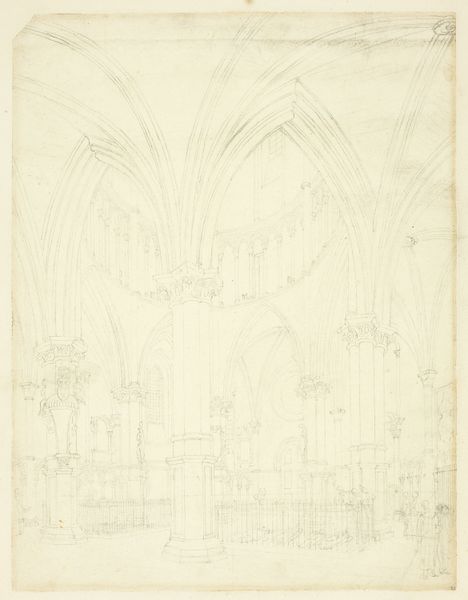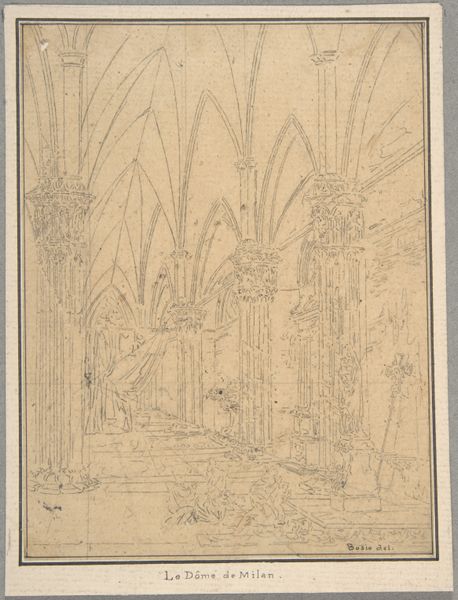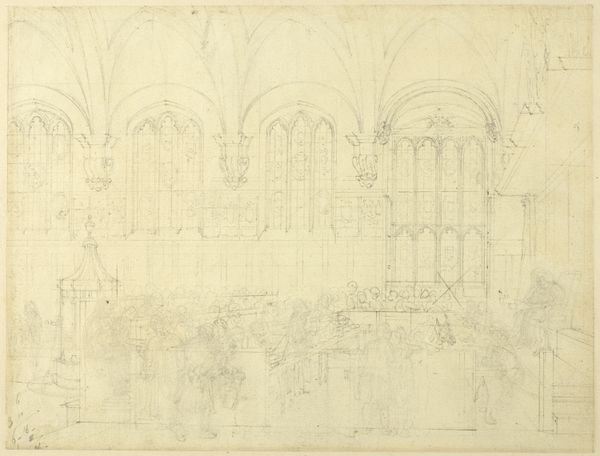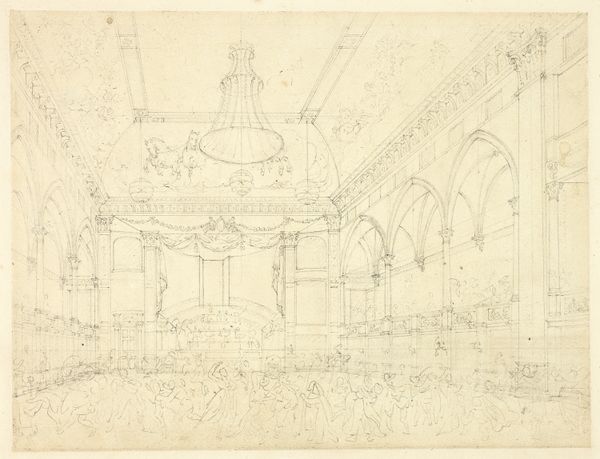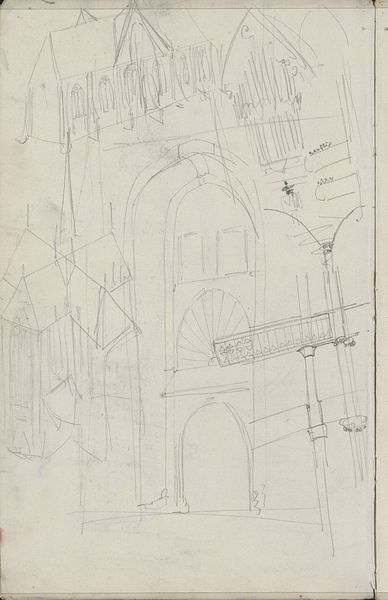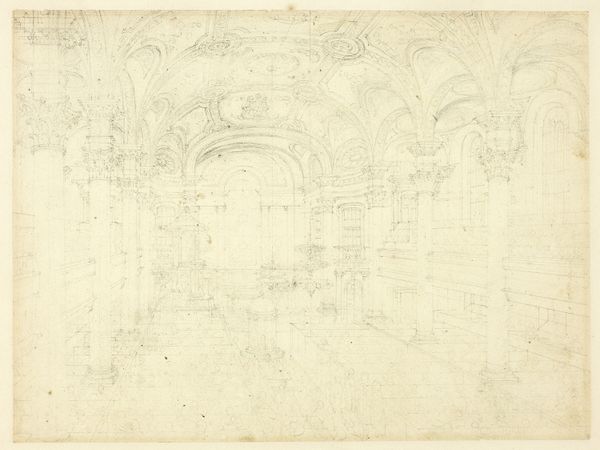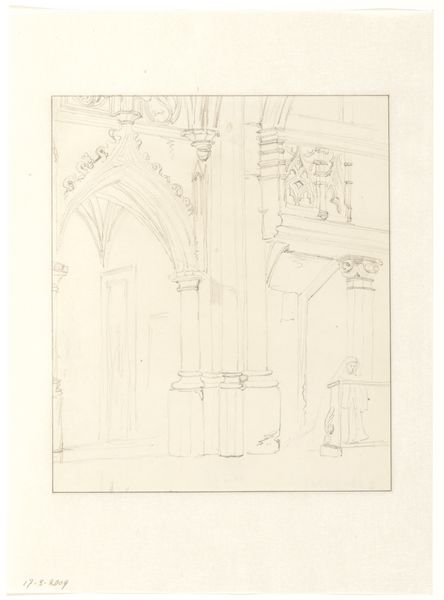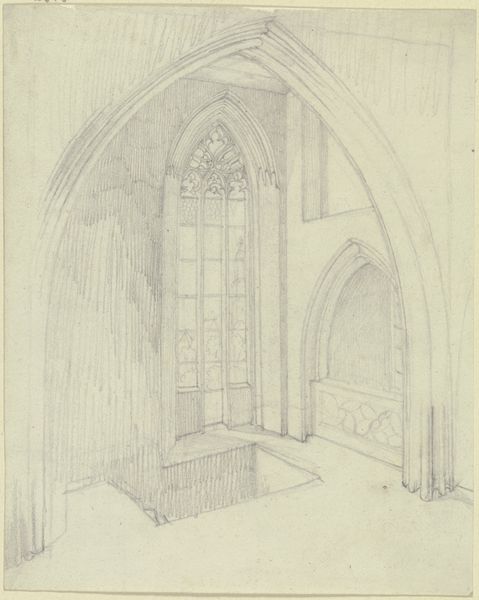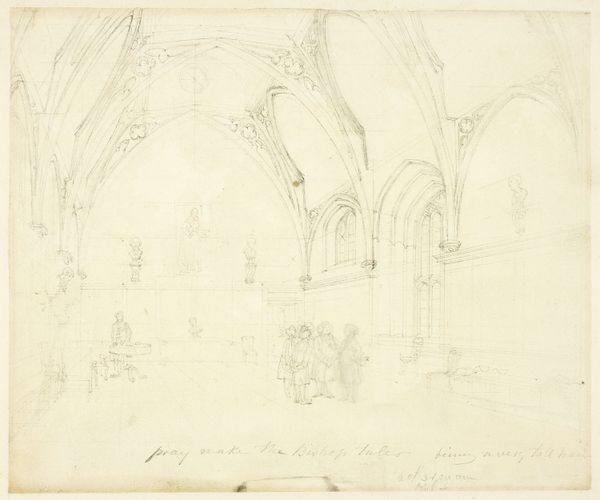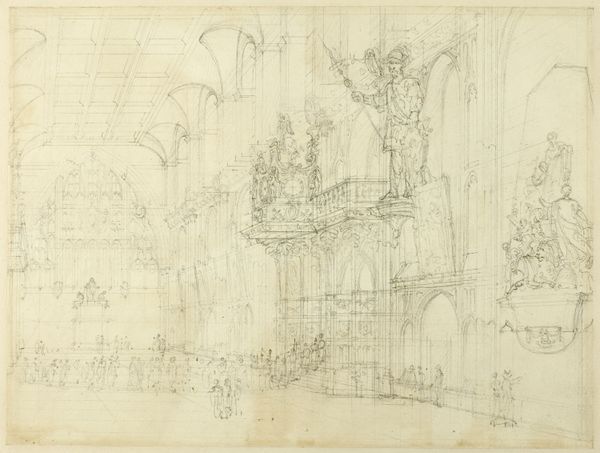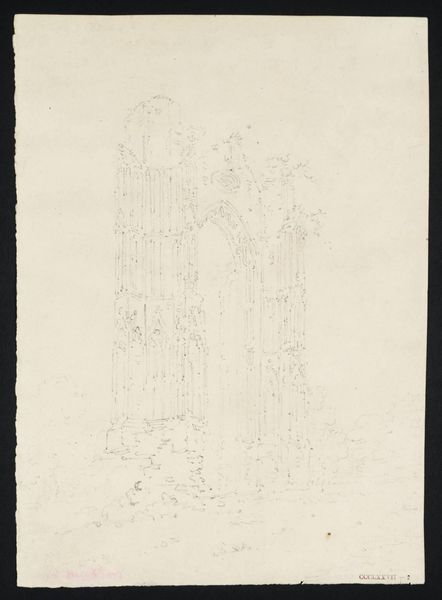
drawing, print, paper, graphite
#
drawing
#
neoclacissism
#
medieval
# print
#
landscape
#
perspective
#
paper
#
ancient-mediterranean
#
graphite
#
academic-art
Dimensions: 267 × 194 mm
Copyright: Public Domain
Augustus Charles Pugin made this pencil drawing of the North Aisle of Westminster Abbey, sometime in the early 19th century. It captures the architectural grandeur and the echoes of British history embedded within the Abbey’s walls. Consider the cultural context of the early 1800s in Britain. The Abbey was, and remains, a potent symbol of national identity, a place of coronations, royal weddings, and the burial site of monarchs, poets, and scientists. Pugin's detailed rendering of the Gothic architecture evokes a sense of historical continuity and national pride, at a time when Britain was a major global power. How might this image create meaning through the visual codes of architectural space, cultural references, and historical associations? The image subtly reinforces the Abbey’s role as a stage for national rituals, subtly reinforcing conservative social structures. To fully understand its meaning, a historian might consult architectural surveys, records of state ceremonies, and cultural histories of British identity. This drawing serves as a reminder that the interpretation of art is always contingent on its social and institutional context.
Comments
No comments
Be the first to comment and join the conversation on the ultimate creative platform.
